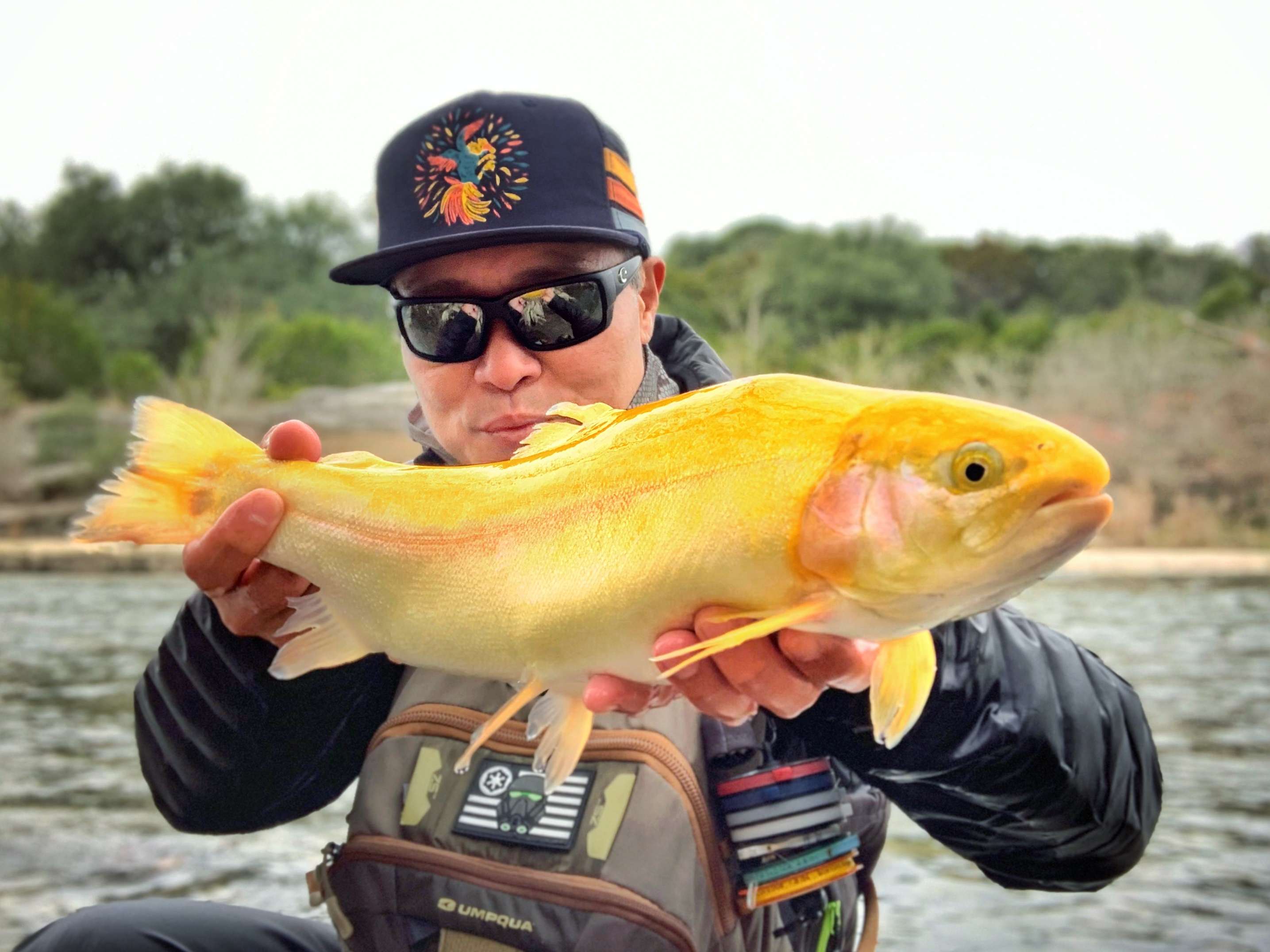
Palomino trout, also known as golden trout, are a species of fish that captivate the hearts of anglers and nature enthusiasts alike. Known for their vibrant gold-colored bodies, these distinctive fish offer a mesmerizing sight in their natural habitat. Found in pristine mountain streams and lakes, palomino trout have become a favorite target for anglers seeking a unique and challenging catch.
This article explores 19 fascinating facts about palomino trout, shedding light on their habitat, behavior, and significance. Whether you’re an avid fisherman or simply intrigued by the wonders of the natural world, join us on this journey to discover the remarkable characteristics of the stunning palomino trout.
Key Takeaways:
- Palomino Trout are rare, golden-yellow fish prized by anglers for their beauty and strength. They need clean, cold water to thrive and are a symbol of natural beauty and diversity in aquatic ecosystems.
- Palomino Trout are a hybrid species with a genetic mutation causing their unique coloration. They are popular in fishing competitions and require suitable stream conditions for reproduction.
Palomino Trout are a rare species of trout.
These beautiful fish are known for their unique golden-yellow coloration, making them stand out in the water.
They are not a naturally occurring species.
Palomino Trout are actually a hybrid breed, created by crossing a golden strain of rainbow trout with a brown trout.
Their coloration is caused by a genetic mutation.
The golden color of Palomino Trout is the result of a recessive gene that affects their pigmentation.
They are prized by anglers for their striking appearance.
Many fishermen consider catching a Palomino Trout to be a special achievement due to their rarity and beauty.
Palomino Trout thrive in cold, clear waters.
These fish prefer cool, oxygen-rich environments like streams, rivers, and lakes.
They are known for their strength and fighting spirit.
Palomino Trout are known to put up a good fight when hooked, making them a favorite target for experienced anglers.
They have a varied diet.
Palomino Trout feed on a diverse range of aquatic insects, small fish, and crustaceans.
They can grow to impressive sizes.
While the average size of Palomino Trout is around 12-16 inches, they have been known to reach lengths of up to 24 inches.
They require clean water to survive.
Palomino Trout are highly sensitive to pollution and rely on pristine water conditions for their survival.
They are popular in fishing derbies and competitions.
Due to their unique appearance and strong fighting ability, Palomino Trout are often included as a target species in fishing tournaments.
Their popularity has led to conservation efforts.
As Palomino Trout face challenges in their natural habitat, various organizations work to preserve and enhance their populations through conservation initiatives.
They are predominantly found in the western United States.
While Palomino Trout can be found in other regions, they are most commonly associated with lakes and rivers in the western states.
They are not commonly stocked in fisheries.
Due to their unique genetic makeup and susceptibility to hybridization, Palomino Trout are not typically stocked in fish farms or hatcheries.
They have a relatively short lifespan.
On average, Palomino Trout live for around 4-6 years, although some individuals may live longer under optimal conditions.
They are a popular target for fly fishing.
The distinctive appearance and behavior of Palomino Trout make them a sought-after species for fly fishermen seeking a rewarding and challenging catch.
They are known for their acrobatic leaps out of the water.
When hooked, Palomino Trout are notorious for their energetic jumps and aerial displays, adding to the excitement of the catch.
They require adequate stream flow for reproduction.
Palomino Trout rely on suitable stream conditions, including a sufficient water flow, to successfully spawn and reproduce.
They are highly adaptable to different habitats.
While they thrive in coldwater environments, Palomino Trout can adapt and survive in a variety of water conditions, including lakes and reservoirs.
They are a beloved symbol of natural beauty.
Palomino Trout are not only prized for their elegance but also serve as a reminder of the magnificence and diversity of our aquatic ecosystems.
Conclusion
Palomino trout are truly fascinating creatures that inhabit freshwater bodies around the world. From their striking coloration to their impressive size, these fish never fail to capture our attention. Whether you’re an angler looking for a unique catch or simply a nature enthusiast curious about these beautiful fish, learning about Palomino trout is sure to deepen your appreciation for the natural world.
With their golden hue, distinctive spots, and graceful swimming style, Palomino trout are a true delight to behold. The interplay of genetics and environmental factors contributes to their unique coloration, making each individual fish a work of art. Understanding their habitat preferences, feeding habits, and reproduction process can not only enrich our knowledge but also aid in conservation efforts to protect these wonderful creatures.
So, the next time you’re near a freshwater stream or lake, keep an eye out for the shimmering golden beauty of a Palomino trout. They are a testament to the diversity and wonder of the natural world, and by appreciating and protecting them, we can ensure that future generations can continue to experience the joy of encountering these remarkable fish.
FAQs
Q: What makes a Palomino trout unique?
A: Palomino trout are unique due to their golden coloration, which is caused by a combination of genetic factors and environmental influences.
Q: Where can Palomino trout be found?
A: Palomino trout can be found in freshwater bodies such as rivers, streams, and lakes across the world.
Q: How big can Palomino trout grow?
A: Palomino trout can grow to impressive sizes, with some individuals reaching lengths of over 2 feet and weighing more than 10 pounds.
Q: What do Palomino trout eat?
A: Palomino trout are opportunistic feeders and primarily consume small aquatic insects, crustaceans, and smaller fish.
Q: How do Palomino trout reproduce?
A: Palomino trout reproduce through a process called spawning, where females lay their eggs in gravel beds and males fertilize them externally.
Was this page helpful?
Our commitment to delivering trustworthy and engaging content is at the heart of what we do. Each fact on our site is contributed by real users like you, bringing a wealth of diverse insights and information. To ensure the highest standards of accuracy and reliability, our dedicated editors meticulously review each submission. This process guarantees that the facts we share are not only fascinating but also credible. Trust in our commitment to quality and authenticity as you explore and learn with us.


